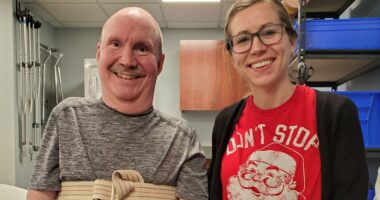Feeding, Swallowing, and GI Issues in Spinal Muscular Atrophy
Overview
People with SMA may experience a number of gastrointestinal issues, as well as swallowing and/or chewing difficulties in the more severe types, making getting adequate nutrition a challenge.
Gastrointestinal Access
Some clinicians suggest that gastroesophageal reflux and aspiration risk are universal features in SMA type 1. If a patient with SMA fails a swallow study or exhibits growth failure, the expert panel recommends placement of a temporary nasogastric or nasojejunal tube until a long-term gastrostomy tube can be placed.
GERD
In a survey of patients with SMA, more than half of caregivers reported gastroesophageal reflux disease (GERD), and gastroesophageal motility issues are well-documented in patients with progressive neuromuscular disease. Esophageal dysmotility and reflux is inevitable in the most severe forms of SMA, and thus for these patients treatment of GERD is necessary for both symptomatic relief and for prevention of aspiration of stomach contents.
For Sitters
Children with SMA who are able to sit (i.e., “sitters”) often encounter substantial difficulties with chewing, choking, coughing, and food aspiration. While these issues are less severe in sitters than they are in non-sitters, providers must evaluate and closely follow feeding and swallowing in sitters nonetheless.
For Non-sitters
Feeding and swallowing are among the chief concerns for families and healthcare providers on non-sitters with SMA. Bulbar muscle dysfunction affects the laryngeal and pharyngeal muscles, which can interfere with the ability to swallow and protect the airway. These factors greatly increase the risk for aspiration and pneumonia in children with SMA.


